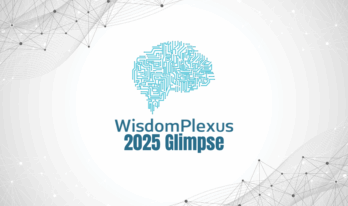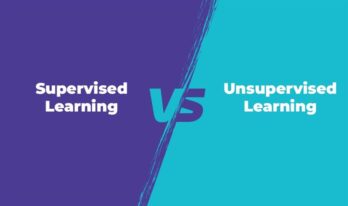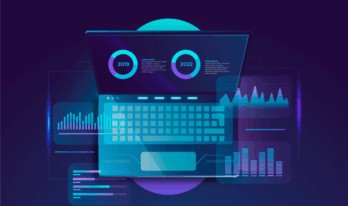The rules of Business Intelligence are evolving, and this has made a huge impact in some sectors, not only because of the speed of technological advances but also because of the new techniques of extracting value from data.
2018 was a year of innovation as well as product and service enhancements, leading organizations to an analysis of how to prioritize a modern BI approach that drives the company to get the most value from their data.
Thinking of the people ahead, Adriano Chemin, vice president of Tableau, a data visualization company, brought together the main trends of Business Intelligence.
Let's look at the topmost trends of Business Intelligence Trends for 2023 and beyond
Explainable Artificial Intelligence Trends
Artificial intelligence (AI) is here to stay is a fact. Thanks to machine learning companies are able to create clusters of behaviour, identify market trends, assess risks, make quick decisions, and automate millions of activities that previously consumed time and resources.
There is no denying that AI has opened up a world of possibilities for the BI universe.
On the other hand, the more we depend on AI, the greater is our distrust of the credibility of model-based recommendations, since most tools that use machine learning do not provide a transparent way of looking at the algorithms or logic behind decisions and recommendations.
This is where AI Explainable comes in, the practice of understanding and presenting transparent displays of machine learning models.
If it is possible to question human beings, why not have the same option with machine learning in making decisions?
Explainable AI enables executives, scientists, and data analysts to understand and question how machine learning is applied to the day-to-day running of a business, creating more transparency and trust in results.
Natural language humanizes the data: Business Intelligence
With the advancement of Natural Language Processing (NLP) systems, everyone can have natural interactions with the data.
Natural language represents a paradigm shift in the way people ask questions about the data. Being able to interact with visualizations in a way that interacts with people, makes users aware of areas of the analysis pipeline previously dedicated only to data scientists and experienced analysts.
Users are not limited by their own analytical skills; what defines this limitation is the complexity of the questions. With this, advanced users can also answer more detailed questions in less time and present more interesting panel features to others.
Actionable analysis: data mobility drives actions
Speed is the keyword in the lives of those who work with data analytics today, whether in access to information or in response time to perform the necessary action, everything needs to be aligned in a single workflow and available in place so that the Scientist/Data Analyst can act fast.
BI platforms evolve so that the data helps people to take concrete actions. The convergence between analysis and action will reduce the time and effort between information and decision-making.
In addition, it will make data more widely available in workflows, stimulating more and more people to incorporate data into everyday decisions.
Collaborative use of data has a significant positive impact on society
The community brings together Data Scientists and Developers whose goal is to use their expertise to solve large-scale social problems.
Targeted efforts by public and private sector organizations strengthen the "Data for Good" movement. Although the challenges are the same in large-scale collaborative projects, the "Data for Good " movement demonstrates the altruistic potential of data sharing.
Together, advances in technology, the development of data empowerment, and the focus on collaboration create a fertile environment for solving some of the world's most difficult problems.
In addition to their impact on private companies, data is transforming non-profit organizations and NGOs. To support this, Gartner indicates that the Data for Good movement on social media platforms grew by 68% last year, and the public is becoming more aware of the positive impact of data on social media.
Codes of ethics catch up to data
The debate on data privacy has become increasingly prominent and consumers are more aware than ever of sharing personal data.
This affects the way business deals with monetization, data collection, and sharing. New regulations such as GDPR require reflections on data ethics and privacy to be part of day-to-day business practices. This includes:
Codes of ethics: Areas such as law, medicine, and accounting have long been dealing with professional codes of ethics. As data is proliferating in all areas of business, companies are beginning to evaluate how to apply these same principles to data analysis practices.
As measured by Gartner, "The digital age of business has overshadowed the boundaries between technology and business." Data is now a key piece of the strategic puzzle.
Changes in business processes: Companies are thinking critically about the entire life cycle of their data, from collection to analysis.
This opens up an opportunity to evaluate the company's data management strategy as a whole to ensure compliance with the company's internal code of ethics and regulations.
Data management converges with modern Business Intelligence platforms
As data sources become more complex and diverse, data management is now even more important in modern BI implementations.
The more the workforce uses data to guide decisions, the more organizations must ensure the accuracy of their data and the analysis done with them.
Companies have resorted to data curation to address the management and governance challenges that accompany such broader data access.
Data curation covers how an organization collects, cleans, defines, and aligns different data. This process creates a link between the data and its applications in the real world.
Data storytelling is the new language of corporations
Data is the most powerful way to communicate a discovery, present insight or expose its results, and nothing like storytelling to generate that positive impact.
Analytical storytelling, or telling a story through data, is one of the most striking trends in the BI world, and a much more attractive way to expose every step of your analytics in an actionable, easy-to-understand way.
As companies create a culture of analysis, telling stories with data has gained new meanings. Rather than presenting a single conclusion, storytelling promotes the creation of dialogue and contributes to a holistic approach to analysis.
With storytelling, both the panel's creator and the public become responsible for coming to a conclusion about what the data is saying - stimulating diverse ideas and promoting collective work or co-creation of panels.
Enterprises get smarter about analytics adoption
What happens when leaders give more prominence to engagement and less focus on adoption? Many Business Intelligence Trends initiatives have a well-defined start and end dates, and it is not uncommon for them to be considered "complete" after launching for users.
However, the concept of adoption not only gives access to BI solutions. Data managers are reassessing how the adoption of Business Intelligence integrates a strategic shift towards modernization, as real value is not measured by the solution being deployed, but rather by the use that the workforce makes of the solution to impact the firm.
Data democracy elevates the data scientist
There is a huge volume of data that is too complex. The profile of a Data Scientist requires extensive knowledge between machine learning and advanced statistics.
The role of the Data Scientist tends to be reinforced for a strategic business approach. The demand for Data Scientists is great. In 2017, LinkedIn stated that "the vacancies for Data Scientists have grown more than 650% since 2012."
But while more departments and functions are expected to work with data, there is a general increase in data literacy and hence the emergence of more "citizen Data Scientists."
According to Gartner, they are "individuals capable of generating models that use advanced analytics or predictive capabilities, but whose primary job function is outside the realm of statistics and analysis."
These individuals are not replacing Data Scientists, but they are becoming important partners in developing and testing hypotheses.
Accelerated cloud data migration fuels modern Business Intelligence adoption
Cloud migrations are developing for data storage and exploitation. It is a modern approach to analytics to simplify and optimize the use of complex architectures.
Accelerated and unprecedented data migration to the cloud leads organizations to rethink their strategy. Modernizing the data strategy often means rethinking the storage location of the data.
More and more companies recognize the benefits of migrating data to the cloud, including increasing flexibility and scalability at a lower cost of ownership.
As organizations evaluate their data strategy, they also rethink their analytical model and move from traditional Business Intelligence Trends to modern Business Intelligence Trends.
The demand for better predictive analytics
As per a recent survey conducted by Tableau which is underway, predictive analytics is emerging as the most popular choice for the 11th trend of Business Intelligence in 2023.
Statistics have always been part of the decision-making of the most structured companies but have not been able to prevent some strategic shipwrecks.
Although the numbers were correct, they addressed only one of the thousands of business variables. Thus, based on statistics alone, decisions depended on a share of luck and the so-called business sentiment.
Over time, new channels and systems were created to improve service and, as a result, produced a universe of data that, while fundamental, was humanly impossible to analyze.
Under these conditions, predictive analysis emerged as a viable and intelligent solution. Analytics software allowed all statistics and stored data to be grouped, providing insights, and indicating patterns and behavioural trends.
You may also like to Read:
5 reasons why Business Intelligence (BI) is the discipline of the future
Big Data: Business Intelligence Insights for 2023
Overview and Aspects of Business Intelligence in Marketing




